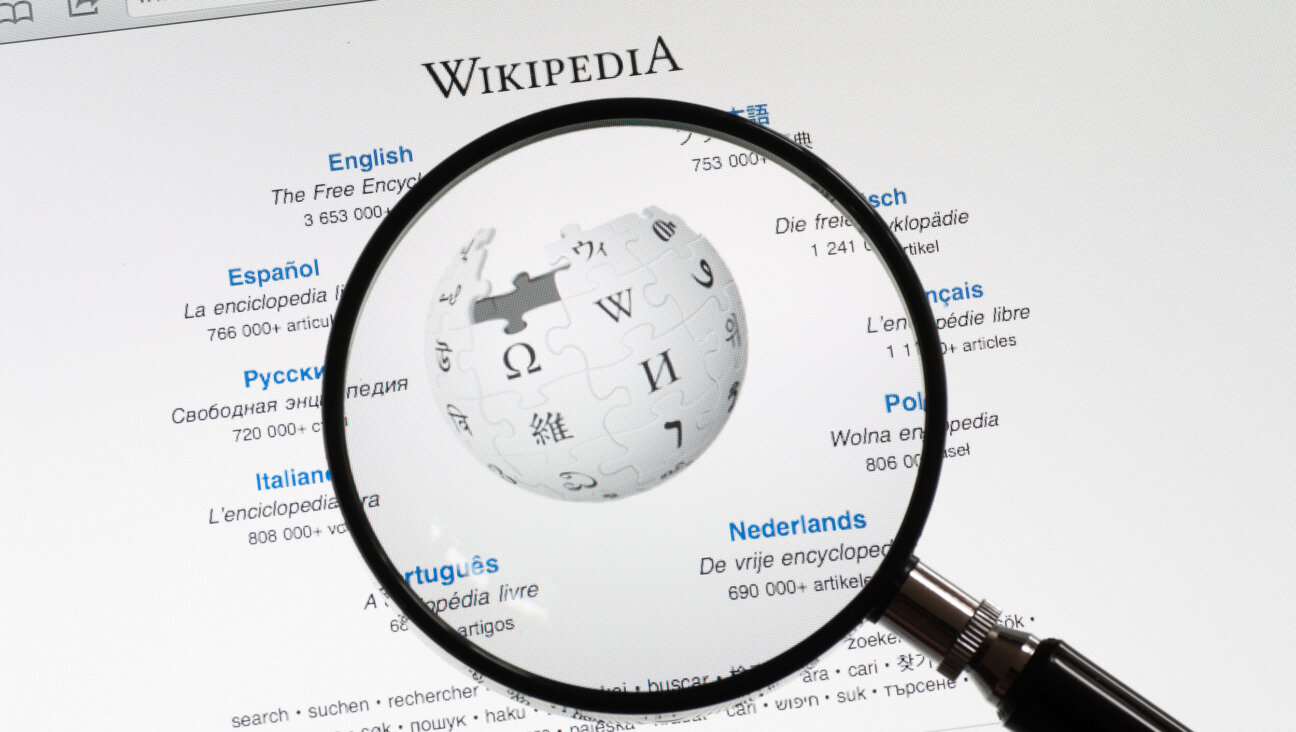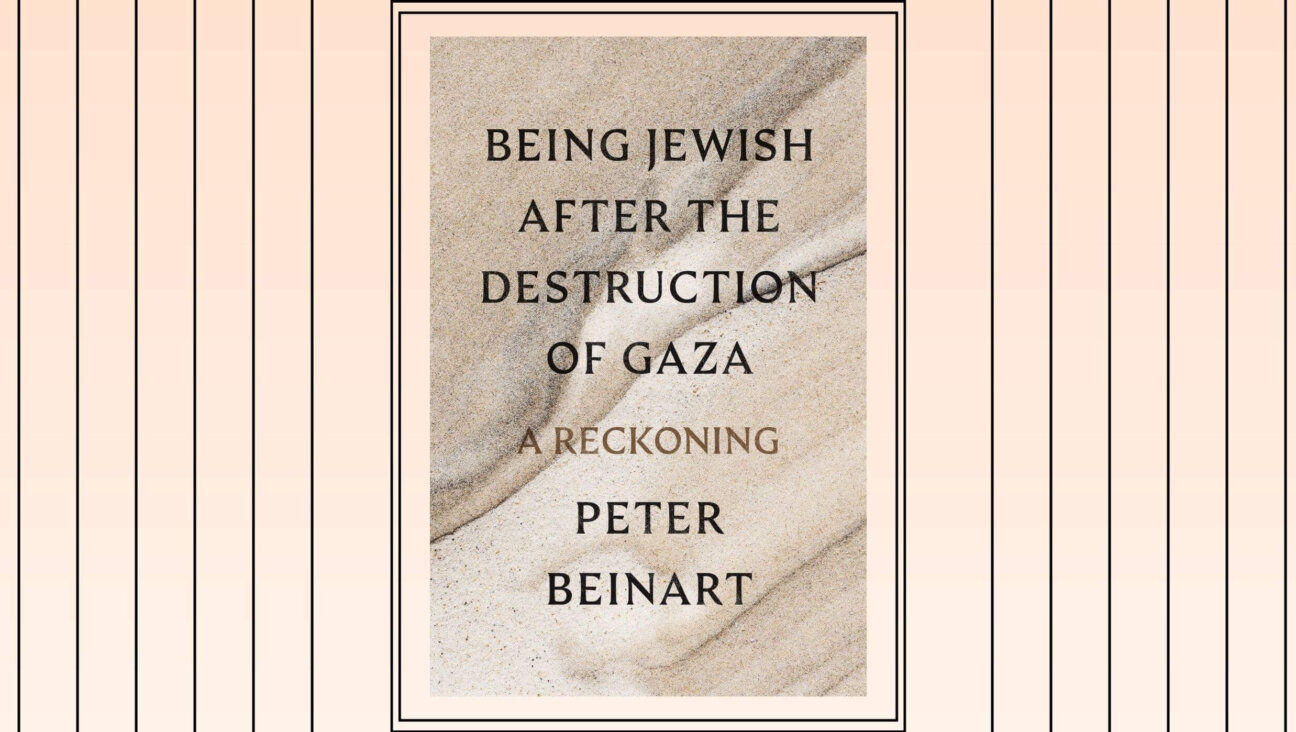February 8, 2008
Note Jewish Scientists
I could not agree more with Arts & Culture writer David Kaufmann’s review of the PBS series “The Jewish Americans” (“A History of Us: ‘The Jewish Americans’ Hits the High Notes,” January 25). What PBS did, they did well; what they left out was even more incredible.
Kaufmann properly laments the omission of Jewish contributors to American high culture — for example, the absence of Aaron Copland, Saul Bellow, Leonard Bernstein, Bernard Malamud and Philip Roth, not to mention immigrants like Bruno Walter and Arthur Rubinstein. Entire generations of Jewish writers and musicians go unmentioned.
But the omission of any of the great American Jewish contributors to science and medicine is at least as egregious. How can one describe Jewish American epiphanies with no mention of Jonas Salk or Albert Sabin? Or of Albert Einstein, considered by many to have been the greatest of all modern scientists?
There is a lengthy roster of Jewish American scientists who are also Nobel laureates; none were mentioned. Here are a few: Richard Feynman, Leon Lederman, Sheldon Glashow, Steven Weinberg, Arno Penzias, Murray Gell-Mann and Isidor Rabi in physics; Roald Hoffmann, Rudy Marcus and Sidney Altman in chemistry; Sydney Brenner, Stanley Cohen, Baruch Blumberg and Rosalyn Yalow in medicine.
These American Jews, some native born and some who found refuge from persecution on these shores, changed humanity’s conception of itself and its world. How they could be omitted from a survey of Jews in America surpasses comprehension, and unfortunately distorts the overall mosaic of Jewish life in this country.
Robert Moss
Metuchen, N.J.
Museum Not Competing For Day School Dollars
Opinion writer Jonathan Tobin complains that funds being sought for the National Museum of American Jewish History’s capital campaign may be draining dollars away from Jewish education (“Our Museum Problem,” January 25).
The National Museum of American Jewish History, however, is an educational institution that will serve the millions of people who annually visit Independence Mall in Philadelphia, the birthplace of American freedom. History is an important part of the education process.
Fortunately, the leadership of Congregation Mikveh Israel, the second oldest synagogue in the United States, agreed to open a museum when they obtained federal land on Independence Mall in the early 1970s. I was honored to carry a Torah from the Liberty Bell to the new home of the museum and congregation on July 4, 1976. Since that time, despite the increase in Jewish museums, we remain the only institution to exclusively document the American Jewish experience from 1654 to the present.
Thousands of Philadelphia public school children, mostly non-Jewish, have scheduled visits each year with their teachers to learn about the history of a minority population in this country. We also have visits from the Jewish day schools in the area, and we take great pride in the academic collaborations with the Judaic studies programs at the University of Pennsylvania, Temple University, Drexel University and Gratz College. We are the history laboratory for our thousands of visitors annually.
Do we need more Jewish day schools in the Delaware Valley? Yes. But our campaign is not competing for those dollars.
A significant number of major gifts have come from California, Texas, New York, Georgia and other states. Quite a few of our local major donors are also active supporters of our Jewish day schools. We hope that the education our future visitors receive at the museum may motivate them to support day schools.
Walter Cohen
Chairman Emeritus
National Museum of American Jewish History
Philadelphia, Pa.
Jonathan Tobin appears to argue that museums — in particular the National Museum of American Jewish History in his hometown — are a testament to individual and communal vanity, and that the Jewish community needs to better fund educational initiatives such as an expansion of the day school system.
The problem with Tobin’s analysis is that museums are no longer a place where the relics of the past are collected, stored, catalogued and left to gather dust. They are educational institutions.
Historical museums tell stories that inform, intrigue their visitors and, when successful, instill a considerable measure of pride in the story that is told and the desire to learn more. They are educational institutions for the whole family — children, their parents and their grandparents.
The problem of the American Jewish community is that there is a growing gap between the institutions of the community and the Jews they seek to attract, a disconnect between institutional life and American Jews. A museum is an alternate creative institution that can educate Jewishly and reach out to the alienated, non-committed or marginally affiliated Jews as well as to the core of the community.
As one who has educated four Jewish children in Jewish day schools, I can attest to their expense and wish that donor money was going to fund scholarships for those less privileged than me, but Tobin falsely appears to believe that if money was not being raised for a museum, it would be given to a day school. It is far more likely that the funds would be given to a non-Jewish museum dedicated to the arts or science, or to a symphonic hall or opera house.
We should wonder why the Jewish community has not created a Jewish children’s museum in every city that could teach the marvels of Judaism and Jewish history to Jews and non-Jews alike and might reach Jews and those of Jewish origin who do not enter synagogues or would not start their Jewish journey with a day school education.
Michael Berenbaum
Los Angeles, Calif.





















